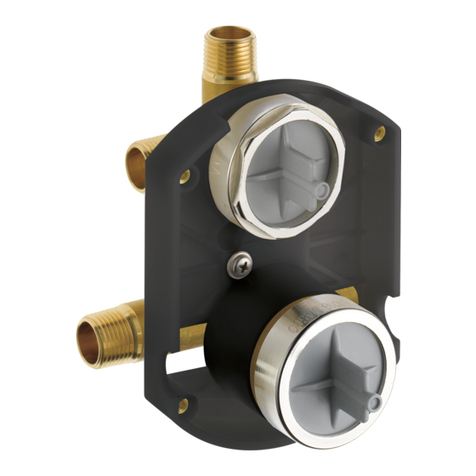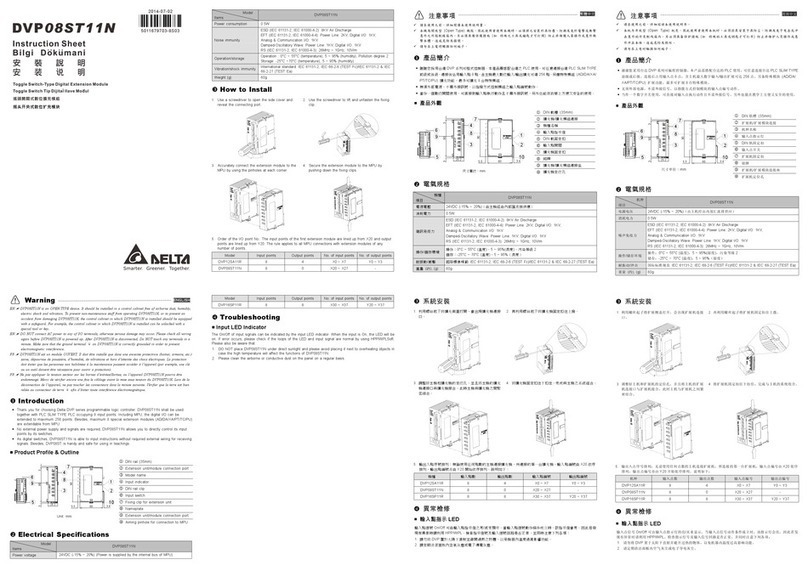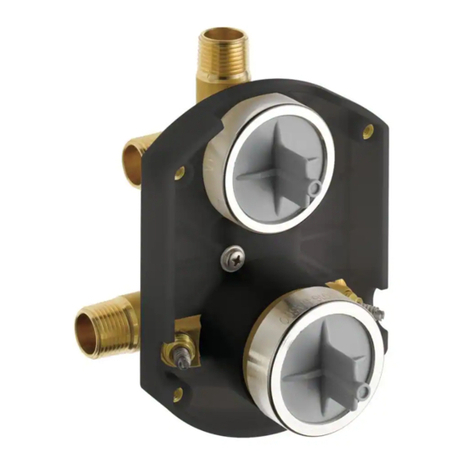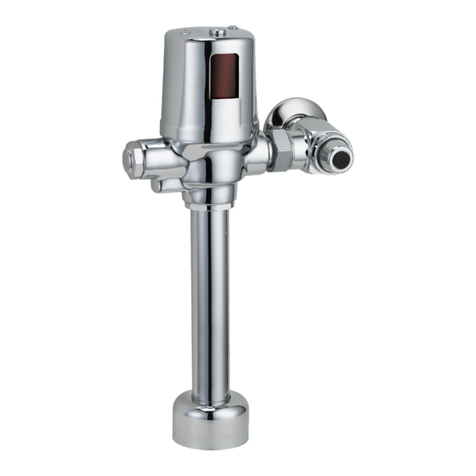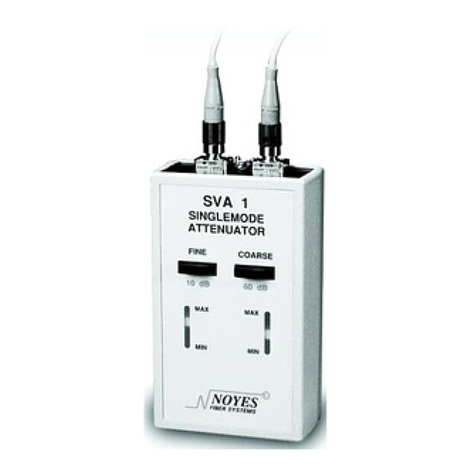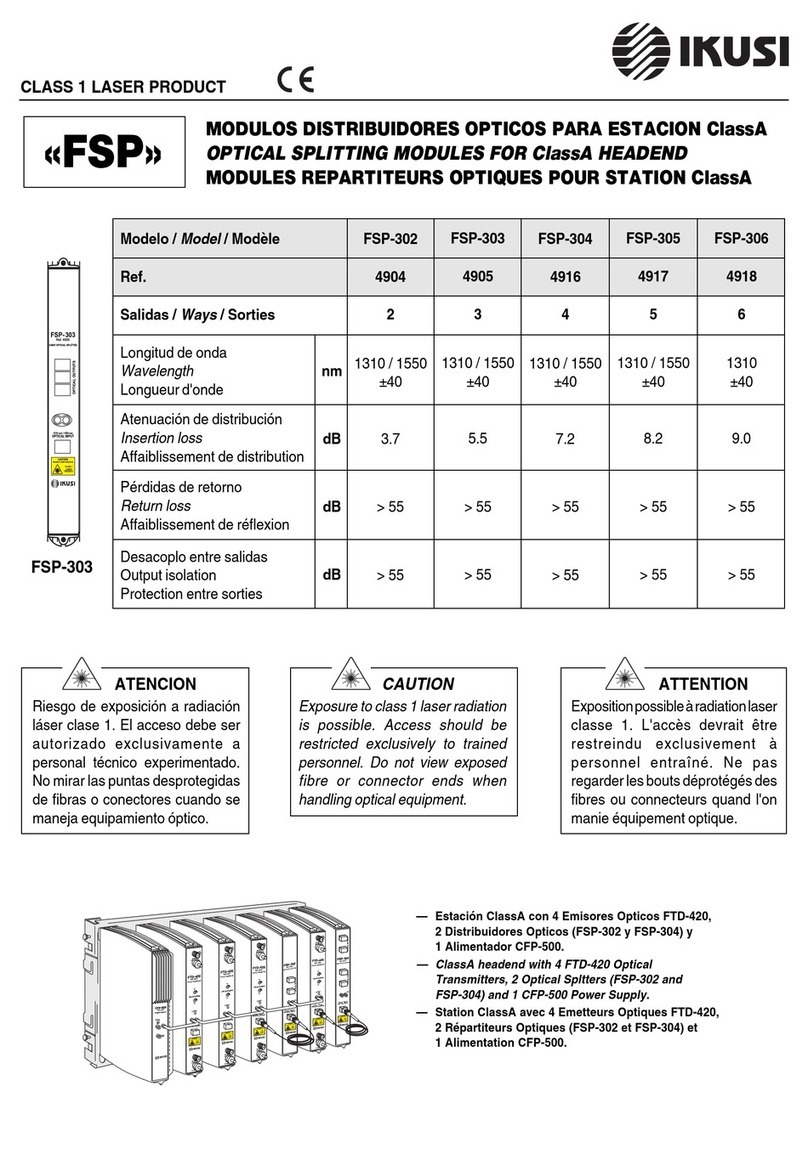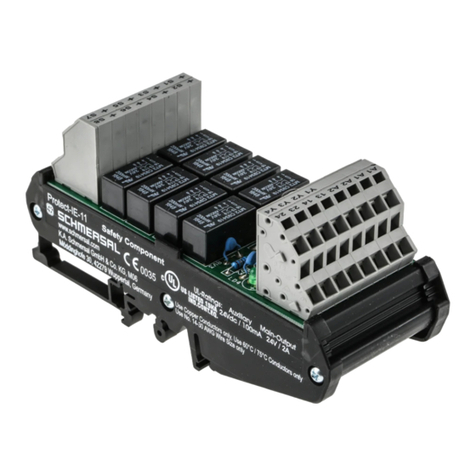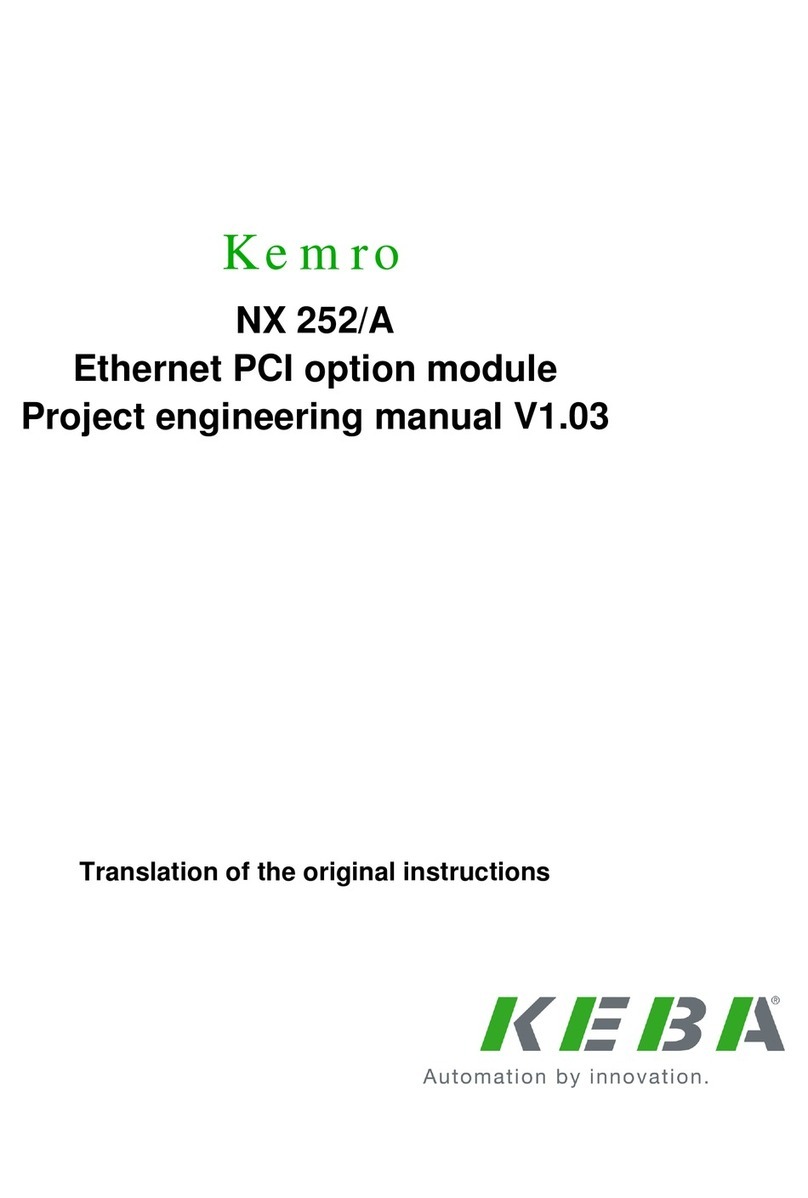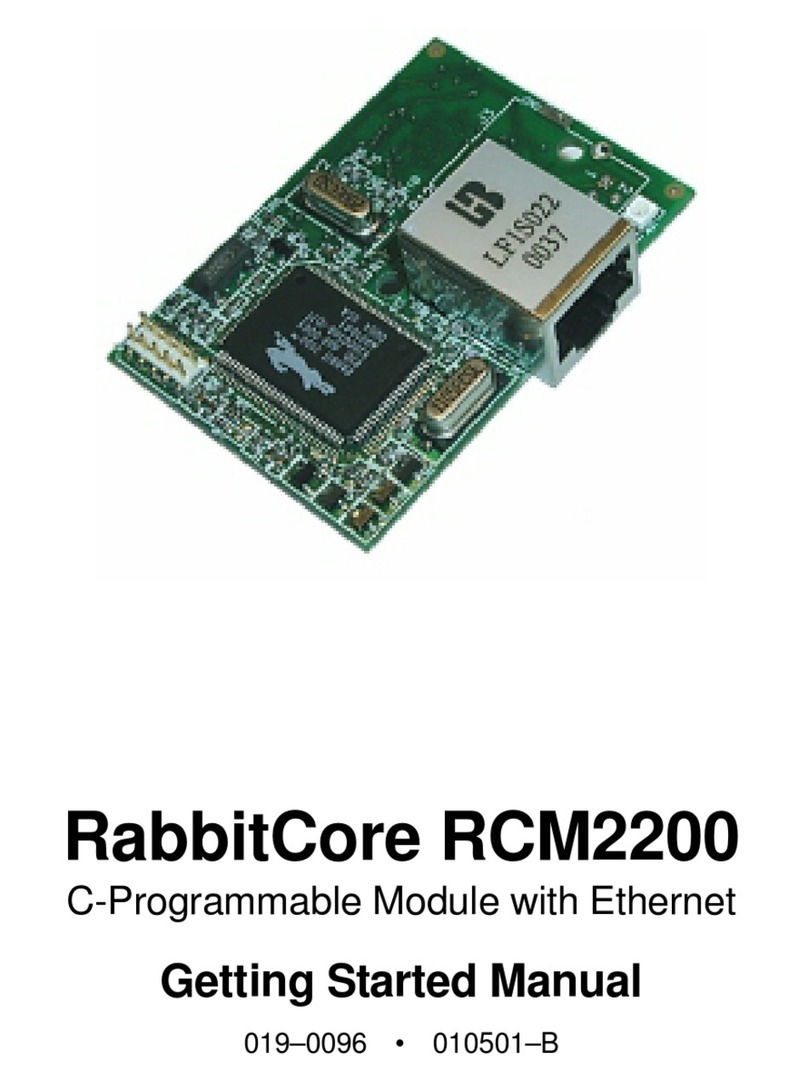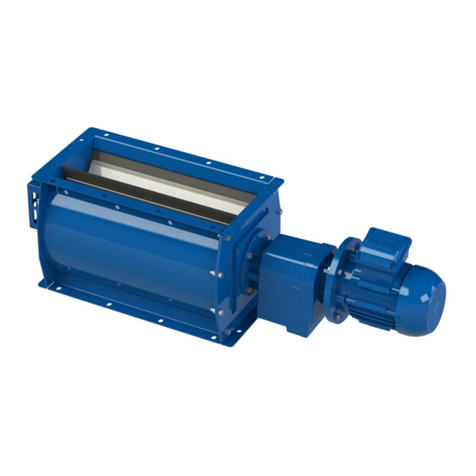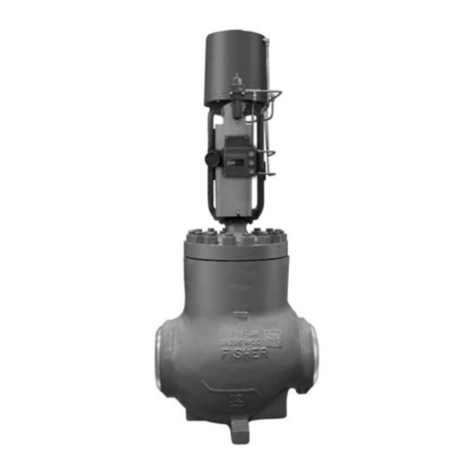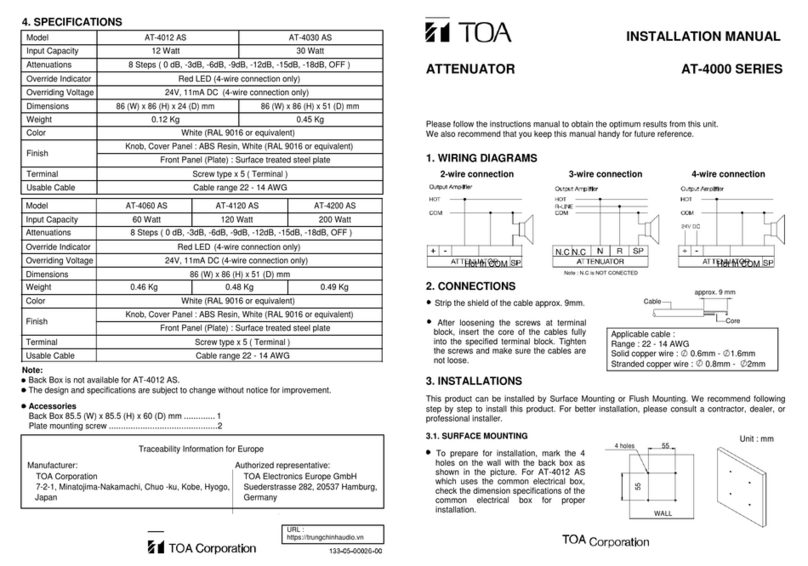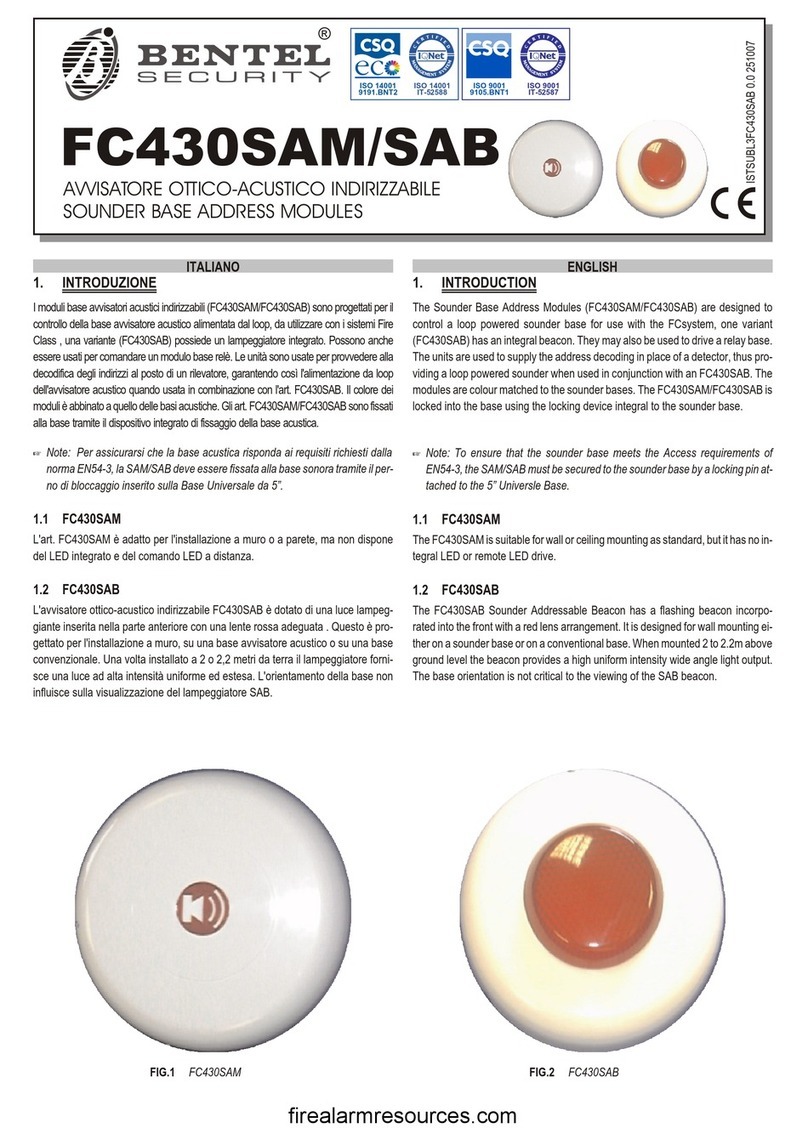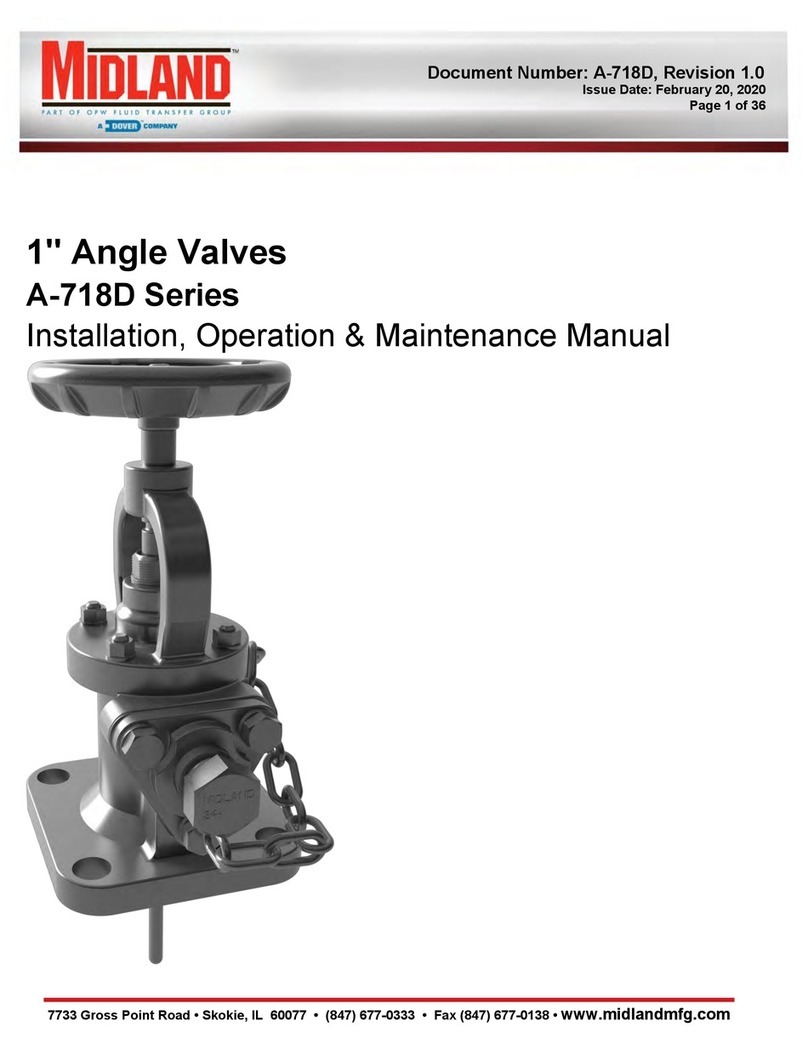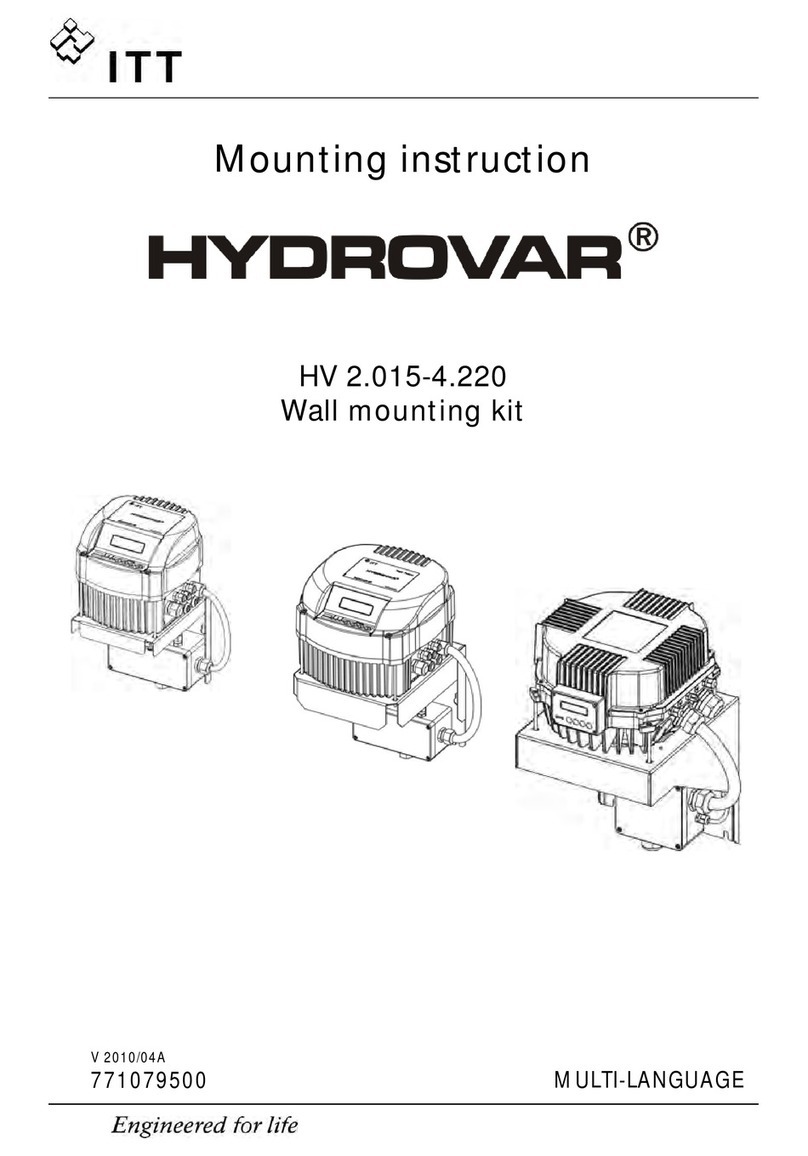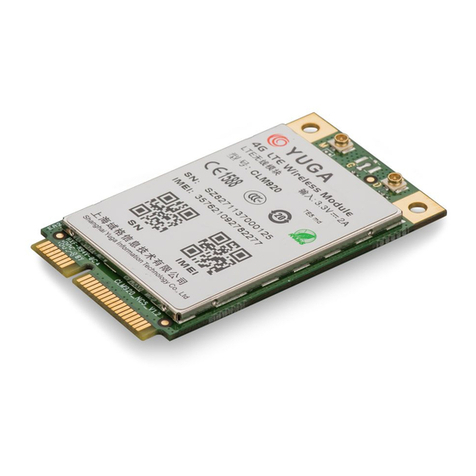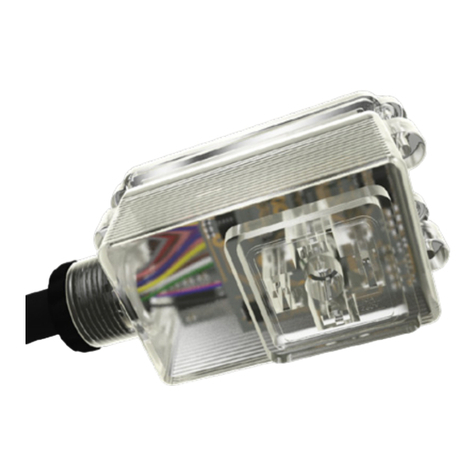Delta CANopen DVPCOPM-SL User manual

CANopen Communication Module DVPCOPM-SL
Warning
Please read this instruction carefully before use and follow this instruction to operate the device in order to prevent
damages on the device or injuries to staff.
Switch off the power before wiring.
DVPCOPM-SL is an OPEN TYPE device and therefore should be installed in an enclosure free of airborne dust,
humidity, electric shock and vibration. The enclosure should prevent non-maintenance staff from operating the
device (e.g. key or specific tools are required for operating the enclosure) in case danger and damage on the
device may occur.
DVPCOPM-SL is to be used for controlling the operating machine and equipment. In order not to damage it, only
qualified professional staff familiar with the structure and operation of DVPCOPM-SL can install, operate, wire
and maintain it.
DO NOT connect input AC power supply to any of the I/O terminals; otherwise serious damage may occur. Check
all the wirings again before switching on the power and DO NOT touch any terminal when the power is switched
on. Make sure the ground terminal is correctly grounded in order to prevent electromagnetic interference.
Table of Contents
1Introduction.........................................................................................................................................3
1.1 Features..................................................................................................................................3
1.2 Functions.................................................................................................................................4
1.3 Explanation of Output/Input Mapping Area of DVPCOPM-SL.................................................5
2Product Profile & Outline ...................................................................................................................6
2.1 Dimension ...............................................................................................................................6
2.2 Product Profiles.......................................................................................................................7
2.3 CANopen Connection Port......................................................................................................7
2.4 CAN Network Endpoint and Topology Structure......................................................................8
2.5 Address Switch........................................................................................................................8
2.6 Function Switch.......................................................................................................................9
2.7 Digital Indicator........................................................................................................................9
3Basic Operation ................................................................................................................................10
3.1 Connecting DVPCOPM-SL to DVP-SV CPU.........................................................................10
3.2 Installing DVPCOPM-SL and DVP-SV CPU on DIN Rail......................................................10
3.3 Connecting to CANopen Connection Port.............................................................................11
4Constructing CANopen Network.....................................................................................................11
4.1 How to Construct a CANopen Network.................................................................................11
4.2 Data Mapping in CANopen Network .....................................................................................13
4.3 How to Configure Network by Delta CANopen Builder Software..........................................14
DVP-PLC Operation Manual 1

CANopen Communication Module DVPCOPM-SL
DVP-PLC Operation Manual
2
4.4 Saving the Configuration Data.............................................................................................. 26
4.5 CANopen Network Control ...................................................................................................26
5Sending SDO, NMT and Reading Emergency by Ladder Diagram .............................................. 28
5.1 Principle................................................................................................................................ 28
5.2 Structure of SDO Request Message.....................................................................................28
5.3 Structure of NMT Service Message......................................................................................30
5.4 Structure of Emergency Request Message.......................................................................... 30
5.5 Application Examples ...........................................................................................................31
6Network Node Status Display.......................................................................................................... 39
6.1 Slave State of CANopen Network.........................................................................................39
6.2 Master Status of CANopen Network..................................................................................... 40
6.3 CANopen Network Status.....................................................................................................41
6.4 Data Structure of SDO Request Message............................................................................41
6.5 Application Examples ...........................................................................................................43
7LED Indicator & Trouble-shooting.................................................................................................. 44
7.1 POWER LED........................................................................................................................44
7.2 RUN LED..............................................................................................................................45
7.3 ERR LED..............................................................................................................................45
7.4 Codes in Digital Display........................................................................................................46

CANopen Communication Module DVPCOPM-SL
1Introduction
1. To ensure correct installation and operation of DVPCOPM-SL, please read this chapter carefully before using your
DVPCOPM-SL.
2. This chapter only provides introductory information on DVPCOPM-SL. For more detailed information on CANopen
protocol, please refer to relevant references or literatures.
3. DVPCOPM-SL is a CANopen module operating on the left side of PLC CPU. PLC CPU can have maximum 8
DVPCOPM-SL modules connected to its left side. DVPCOPM-SL master module is responsible for the data
exchange between PLC and other slaves on the bus when PLC CPU is connected to the CANopen network via
DVPCOPM-SL. To achieve data exchange, DVPCOPM-SL master module is used for transmitting the data in PLC
to slaves on the bus and meanwhile returns the data in slaves to PLC.
4. PLC connected to the right side of DVPCOPM-SL includes DVP-SV, DVP-SX2, DVP-SA2, DVP10MC11T,
DVP-EH3-L, and DVP-EH2-L.
1.1 Features
DVPCOPM-SL can be used as the master in CANopen network, as well as the slave for other masters.
As a master, DVPCOPM-SL features:
Complying with CANopen standard protocol DS301v4.02.
Supporting NMT Master Service.
Error control: Supporting Heartbeat/Node Guarding Protocol.
Supporting PDO Service.
Max. 200 RxPDOs and 390 bytes of data
Max. 200 TxPDOs and 390 bytes of data
Each slave can be allocated maximum 8 TxPDOs and 8 RxPDOs.
PDO transmission type: Supporting event trigger, time trigger, synchronous cycle, and synchronous non-cycle.
PDO mapping: Every PDO is able to map maximum 32 parameters.
Type of mapping data supported:
Storage space Data type
1 bit BOOL
8 bits SINT USINT BYTE
16 bits INT UINT WORD
32 bits DINT UDINT REAL DWORD
64 bits LINT ULINT LREAL LWORD
Supporting SDO Service.
Number of server: 0
Number of user: 3
Supporting standard expedited SDO transmission mode.
Supporting Auto SDO function.Able to execute maximum 20 Auto SDOs to each slave.
Supporting reading/writing of data in slave by using SDO Service in the ladder diagram in PLC.
Supporting Emergency Protocol:
Able to store 5 latest Emergency messages for each slave.
Able to indicate Emergency messages in slave from digital display.
DVP-PLC Operation Manual 3

CANopen Communication Module DVPCOPM-SL
Able to read Emergency message through the ladder diagram in PLC.
SYNC producer; Range: 0 ~ 65,535ms.
As the interface between Delta CANopen Builder software and CANopen network. The software can configure the
network directly through DVPCOPM-SL.
In the auto data exchange with PLC, the user only has to program the D register mapped in PLC without applying
FROM/TO instructions. When connected to PLC, registers after D6000 will be adopted temporarily.
As a slave, DVPCOPM-SL features:
Complying with CANopen standard protocol DS301v4.02
Supporting NMT Slave Service
Error control: Supporting Heartbeat Protocol
Supporting PDO Service: Each slave can be allocated maximum 8 TxPDOs and 8 RxPDOs.
PDO transmission type: Supporting event trigger, time trigger, synchronous cycle, synchronous non-cycle.
Supporting SDO Service.
Number of server: 1
Number of user: 0
Supporting standard expedited SDO transmission mode.
Supporting Emergency Protocol.
Able to indicate Emergency event in slave through digital display.
In the auto data exchange with DVP-SV, the user only has to program the D register mapped in DVP-SV without
applying FROM/TO instructions.
1.2 Functions
CANopen connection
Transmission method CAN
Electrical isolation 500VDC
Interface Removable connector (5.08mm)
Transmission cable 2-wire twister shielded cable with 2-wire bus power and drain
Communication
Message type PDO, SDO, SYNC (synchronous object), Emergency (Emergency object), NMT
Baud rates 10k, 20k, 50k, 125k, 250k, 500k, 800k, 1M bps (bit/sec)
Electrical specification
Power voltage 24VDC, supplied by internal bus from PLC CPU (-15% ~ 20%)
Power consumption 1.7W
Isolation voltage 500V
Environment
Noise immunity
ESD (IEC 61131-2, IEC 61000-4-2): 8KVAir Discharge, 4KV Contact Discharge
EFT (IEC 61131-2, IEC 61000-4-4): Power Line: 2KV, Digital I/O: 1KV
Analog & Communication I/O: 1KV
Damped-Oscillatory Wave: Power Line: 1KV, Digital I/O: 1KV
RS (IEC 61131-2, IEC 61000-4-3): 80MHz ~ 1,000MHz, 1.4GHz ~ 2.0GHz, 10V/m
Operation 0ºC ~ 55ºC (temperature); 50 ~ 95% (humidity); pollution degree 2
DVP-PLC Operation Manual
4

CANopen Communication Module DVPCOPM-SL
Storage -25ºC ~ 70ºC (temperature); 5 ~ 95% (humidity)
Shock/vibration
immunity
International standard: IEC 61131-2, IEC 68-2-6 (TEST Fc)/IEC 61131-2 & IEC
68-2-27 (TEST Ea)
Certificates IEC 61131-2, UL508
1.3 Explanation of Output/Input Mapping Area of DVPCOPM-SL
When DVPCOPM-SL serves as the master of the CANopen network, the output/ input mapping areas in different
positions of the left side of PLC are shown as below table is.
Of the left side of PLC (except DVP10MC11T), the position where the first DVPCOPM-SL is equipped is 1; the
position where the second one is equipped is 2; and so on. Of the left side of DVP10MC11T, the position where the
first DVPCOPM-SL is equipped is 2; the position where the second one is equipped is 3; and so on.
Mapping Area
Position Output Mapping Area Input Mapping Area
1 D6250~D6476 D6000~D6226
2 D6750~D6976 D6500~D6726
3 D7250~D7476 D7000~D7226
4 D7750~D7976 D7500~D7726
5 D8250~D8476 D8000~D8226
6 D8750~D8976 D8500~D8726
7 D9250~D9476 D9000~D9226
8 D9750~D9976 D9500~D9726
When DVPCOPM-SL is served as master of CANopen network, the mapping areas of SDO, NMT, Emergency and
PDO in the different positions of the left side of PLC are as below table is.
Of the left side of PLC (except DVP10MC11T), the position where the first DVPCOPM-SL is equipped is 1; the position
where the second one is equipped is 2; and so on. Of the left side of DVP10MC11T, the position where the first
DVPCOPM-SL is equipped is 2; the position where the second one is equipped is 3; and so on.
Mapping area
Position
Message Request
Area of SDO, NMT,
Emergency
Message Response
Area of SDO, NMT,
Emergency
RxPDO Mapping
Area
TxPDO Mapping
Area
1 D6250~D6281 D6000~D6031 D6282~D6476 D6032~D6226
2 D6750~D6781 D6500~D6531 D6782~D6976 D6532~D6726
3 D7250~D7281 D7000~D7031 D7282~D7476 D7032~D7226
4 D7750~D7781 D7500~D7531 D7782~D7976 D7532~D7726
5 D8250~D8281 D8000~D8031 D8282~D8476 D8032~D8226
6 D8750~D8781 D8500~D8531 D8782~D8976 D8532~D8726
7 D9250~D9281 D9000~D9031 D9282~D9476 D9032~D9226
8 D9750~D9781 D9500~D9531 D9782~D9976 D9532~D9726
DVP-PLC Operation Manual 5

CANopen Communication Module DVPCOPM-SL
When DVPCOPM-SL serves as the slave of CANopen network, the input and output mapping areas in the different
positions of the left side of PLC are shown in below table.
Of the left side of PLC (except DVP10MC11T), the position where the first DVPCOPM-SL is equipped is 1; the position
where the second one is equipped is 2; and so on. Of the left side of DVP10MC11T, the position where the first
DVPCOPM-SL is equipped is 2; the position where the second one is equipped is 3; and so on.
Mapping area
Position Output Mapping Area Input Mapping Area
1 D6282~D6476 D6032~D6226
2 D6782~D6976 D6532~D6726
3 D7282~D7476 D7032~D7226
4 D7782~D7976 D7532~D7726
5 D8282~D8476 D8032~D8226
6 D8782~D8976 D8532~D8726
7 D9282~D9476 D9032~D9226
8 D9782~D9976 D9532~D9726
2Product Profile & Outline
DVPCOPM-SL is composed of CANopen connection port, address switch, function switch, and digital display.
2.1 Dimension
90 [3.543]
60 [2.362]
63.4 [2.496]
33.1 [1.303]
3 [0.118]
IN0
SHLD
GND
CAN-
DVPCOPM-SL
ERR
NODE ADDRESS
0
DR 2
DR 1
DR 0
x16
x16
1
POWER
RUN
DVP-PLC Operation Manual
6

CANopen Communication Module DVPCOPM-SL
2.2 Product Profiles
3
4
7
5
8
2
9
66
6
12
IN0
SHLD
GND
CAN-
DVPCOPM-SL
ERR
NODE ADDRESS
0
DR 2
DR 1
DR 0
x16
x16
1
POWER
RUN
1. Model name 6. Fixing clip for I/O module
2. I/O module Interface 7. Address switch
3. POWER, RUN, ERR indicators 8. Function switch
4. DIN rail clip 9. CANopen connection port
5. Digital display
2.3 CANopen Connection Port
The connector is used on the connection to CANopen network. Wire by using the connector enclosed with
DVPCOPM-SL.
PIN Signal Content
1 GND 0 VDC
2 CAN_L Signal-
3 SHLD Shielded
4 CAN_H Signal+
5 - Reserved
4
GND
SHLD
CAN-
CAN+
5
3
2
1
DVP-PLC Operation Manual 7

CANopen Communication Module DVPCOPM-SL
2.4 CAN Network Endpoint and Topology Structure
In order to make the CAN communication more stable, the two endpoints of the CAN network are connected to 120
ohm terminal resistors. The topology structure of the CAN network is illustrated below.
2.5 Address Switch
The switch is used on setting up the node address of DVPCOPM-SLon CANopen network. Range: 1 ~ 7F (0, 88 ~ FF
are forbidden).
Switch setting Content
1 ~ 7F Valid CANopen node address
0, 80 ~ FF Invalid CANopen node address
NODE ADDRESS
x16
0
x16
1
Example: If you need to set the node address of DVPCOPM-SL to 26 (1AH), simply switch the corresponding switch of
x161to 1 and the corresponding switch of x160to A.
Note:
Use slotted screwdriver to rotate the switch carefully in case you scratch the switch.
Please set up the node address when the power is switched off.After the setup is completed, re-poser
DVPCOPM-SL.
DVP-PLC Operation Manual
8

CANopen Communication Module DVPCOPM-SL
2.6 Function Switch
The switch is used on setting up the baud rate between DVPCOPM-SL and CANopen network (DR0 ~ DR2). See the
table below for the baud rate and its maximum communication distance.
DR2 DR1 DR0 Baud rate (bps) Max. communication distance (m)
OFF OFF OFF 10k 5,000
OFF OFF ON 20k 2,500
OFF ON OFF 50k 1,000
OFF ON ON 125k 500
ON OFF OFF 250k 250
ON OFF ON 500k 100
ON ON OFF 800k 50
ON ON ON 1M 25
IN0 See the explanation below
DR 1
DR 0
DR 2
I N 0
Note:
If the firmware of DVPCOPM-SL is under V1.32, IN0 is invalid. But the function of IN0 is as below for the firmware of
V1.32 and above.
When IN0=ON and the master and slave make the connection, the master sends the NMT message (0x82 or 0x80)
first and then the SDO message. The interval time is 100ms between the two messages. The timeout for SDO
sending is 100ms.
When IN0=OFF and the master and slave make the connection, the master sends the NMT message (0x82 or
0x80) first and then the SDO message. The interval time is 1s between the two messages. The timeout for SDO
sending is 1s.
2.7 Digital Indicator
The digital indicator provides the following two functions:
Displaying the node address of DVPCOPM-SL.
Displaying the error message of slave.
DVP-PLC Operation Manual 9

CANopen Communication Module DVPCOPM-SL
3Basic Operation
3.1 Connecting DVPCOPM-SL to DVP-SV CPU
Open the fixing clip on top and bottom of DVP-SV. Meet the extension port of DVPCOPM-SL with DVP-SV, as .
Press the fixing clips on top and bottom of DVP-SV and check is the connection is fine, as .
DVP28SV
RUN
STOP
2
2
11
GND
SHLD
CAN-
NODE ADDRESS
DR 1
IN 0
DR 0
DR 2
x16
0
x16
1
ERR
RUN
POWER
DVPCOPM
CAN+
3.2 Installing DVPCOPM-SL and DVP-SV CPU on DIN Rail
Use 35mm DIN rail.
Open the DIN rail clip on DVP-SV and DVPCOPM-SL. Insert DVP-SV and DVPCOPM-SL onto the DIN rail.
Clip up the DIN rail clips on DVP-SV and DVPCOPM-SL to fix DVP-SV and DVPCOPM-SL on the DIN rail, as
shown below.
35mm DIN rail
DVP28SV
RUN
STOP
GND
SHLD
CAN-
NODE ADDRESS
DR 1
IN0
DR 0
DR 2
x16
0
x16
1
ERR
RUN
POWER
DVPCOPM
CAN+
DVP-PLC Operation Manual
10

CANopen Communication Module DVPCOPM-SL
3.3 Connecting to CANopen Connection Port
Please wire following the PIN definition of the connection port.
There are two communication interfaces on DVP-SV to communicate with the PC. COM1 is the standard RS-232
interface, and COM2 RS-485. Both interfaces comply with Modbus protocol. The PC communicates directly to PLC
through COM1.
We recommend you also apply Delta’s power module in the connection.
RS-232
4Constructing CANopen Network
In this section, we will introduce how to construct a complete CANopen network by using DVPCOPM-SL and other
slaves.
Before constructing a network, you have to first know clearly what the network is for and start a preliminary planning for
the data to be exchanged. The plan shall include the slaves to be used, type of transmission and the data to be
exchanged, total length of data to be exchanged, requirement on the response time for data exchange, and so on. The
information will decide whether the network you construct is a reasonable one, or if it satisfies your needs, and even
affect the later-on network sustainability and flexibility of network capacity upgrade.
In the example below, we will illustrate how to control RUN/STOP and speed of a Delta ASD-B servo drive by a Delta
digital I/O module DVP-08ST.
4.1 How to Construct a CANopen Network
Equipment and software required:
Equipment & software Function
DVP-PS02 24V power supply module, supplying CANopen network.
DVP-PS01 24V power supply module, supplying DVP-12SA and remote I/O DVP-08ST.
DVP-28SV DVP-SV PLC CPU
DVPCOPM-SL CANopen master
DVP-12SA DVP-SAPLC CPU
DVP-08ST Digital I/O module
IFD9503 CANopen bus adapter
ASD-B Delta B series servo drive
WPLSoft DVP series PLC programming software
Delta CANopen Builder CANopen configuration software for DVPCOM-SL master
DVP-PLC Operation Manual 11

CANopen Communication Module DVPCOPM-SL
Set up DVPCOPM-SL and IFD9503 according to the table below. For how to operate IFD9503, please refer to
Chapter 13.
Module Node address Baud rate (bps)
DVPCOPM-SL 01 1M
IFD9503 02 (connected toASD-B) 1M
IFD9503 03 (connected to DVP-12SA) 1M
Set up ASD-B as follows:
Parameter Set value Explanation
P1-01 02 Control mode: speed mode
P1-09 100 (rpm) Internal speed command 1 (SP1)
P1-10 300 (rpm) Internal speed command 2 (SP2)
P1-11 500 (rpm) Internal speed command 3 (SP3)
P2-10 101 Function of DI1: Servo on
P2-11 114 Function of DI2: SPD0
P2-12 115 Function of DI3: SPD1
P2-18 102 Function of DO1: Output when servo on
P3-00 1 Modbus communication address
P3-01 5 (115,200 bps) Modbus baud rate
P3-02 1 (7,E,1) Modbus data format
P3-06 3F DI1 ~ DI6 controlled by communication
Constructing the CANopen network following the figure below.
PORT2PORT1 PO RT2PORT1
CANopen
DVP28SV
DVPCOPM DVP28SV
RUN
STOP
DVP-12SA
DVP-08ST
L
N
0V
L
N
0V
DVP-PS02
DVP-08STDVP-12SA
IFD9503
DVPCOPM-SL
RS-232
CANopen
network configuration tool
Node 1
Node 2 Node 3
ASD-B
About the connection between IFD9503 and PLC, IFD9503 and ASD-B, or IFD9503 and other equipment, please refer
to Chapter 13. For the electrical specifications of ASD-B, please refer to ASD-B user manual.
DVP-PLC Operation Manual
12

CANopen Communication Module DVPCOPM-SL
4.2 Data Mapping in CANopen Network
Data mapping in DVP-12SA
DVP-08ST, connected on the right hand side of DVP-12SA, offers 8 channels of digital input and 1 byte of input
data. In this example, we will use X0 and X1 on DVP-08ST to RUN/STOPASD-B and select speed. Y0 is for the
output signal ofASD-B operational status. See the table below for more information.
Channel Function
X0 Controlling RUN/STOP of ASD-B
X1, X2
Selecting the speed ofASD-B:
X2 = 0, X1 = 1, selecting SP1
X1 = 1, X2 = 0, selecting SP2
X1 = 1, X2 = 1, selecting SP3
Y0
Operational status of ASD-B:
On: RUN
Off: STOP
Supposed IFD9503 is connected to DVP-12SA and exchanging data with DVPCOPM-SL master, the default length
of input data is 8 bytes and output data is 8 bytes. D256 in DVP-12SA is the start device for input data, and D0 is
the start device for output data. To realize the control function of X0, X1 and X2, we place the statuses of X0 ~ X2
to bit 0 ~ 2 of D256. That is, when X0 = On, bit 0 of D256 will become 1. When X1 = On, bit 1 of D256 will become 1.
In this way, we can realize the control of RUN, STOP and speed of ASD-B by the changes in D256 through
WPLSoft. The status word inASD-B will then be sent to D0. That is, when bit 0 of D0 becomes 1, there will be
signals at Y0.
I/O data area for DVPCOPM-SL master:
D register 15 14 13 12 11 10 9 8 7 6 5 4 3u,3 21 0
D6032 D256 X2 X1 X0
D6033 D257
D6034 D258
D6035 D259
Input data
…
D6282 D0 Y0
D6283 D1
D6284 D2
D6285 D3
Output data
…
DVP-PLC Operation Manual 13

CANopen Communication Module DVPCOPM-SL
Data mapping in ASD-B
In this example, IFD9503 is the interface betweenASD-B and CANopen network. In default setting, IFD9503 offers
1 word of input data and 1 word of output data to exchange data with DVPCOPM-SL master. See the table below
for the relation between the parameters in ASD-B and the input and output data in DVPCOPM-SL master.
D register 15 14 13 12 11 10 9876543 2 1 0
Input data D6036 Multi-function digital output
Output data D6286 Multi-function digital input
4.3 How to Configure Network by Delta CANopen Builder Software
Using CANopen Builder to scan the network
(1) Open CANopen Builder software, as below:
DVP-PLC Operation Manual
14

CANopen Communication Module DVPCOPM-SL
(2) Select ”Setup” => ”Communication Setting” => ”System Channel”, and the "Serial Port Setting” dialog box will
appear.
(3) Set up the communication parameters in the PC and DVP-SV, e.g. the communication port, address, baud rate
and communication format.
Item Function Default
COM Port COM port on the PC to be used to communicate
with DVP-SV COM1
Address Communication address of DVP-SV 1
Baud rate Communication speed between the PC and
DVP-SV 9,600 (bps)
Data Bits 7
Parity Even Parity
Stop Bit
Communication protocol between the PC and
DVP-SV 1
Mode Communication mode between the PC and
DVP-SV ASCII
Click on “OK” and return to the main page.
DVP-PLC Operation Manual 15

CANopen Communication Module DVPCOPM-SL
(4) Select “Network” => ”Online”, and the “Select Communication Channel” dialog box will appear. In this example,
if the connection with DVP-SV is in normal status, you will see the screen as below.
If there are more than one DVPCOPM-SL module (less than 8) connected to the left side of DVP-SV and
supposed there are two connected in this example, after clicking on “Online”, you will see the screen as below.
The DVPCOPM-SL which is closest to DVP-SV is regarded as the first module, and so on.
DVP-PLC Operation Manual
16

CANopen Communication Module DVPCOPM-SL
(5) Select the DVPCOPM-SL which needs to establish the communication. Click on “OK” and start to scan all the
slaves in the network. If the network installation and power supply are normal, you will see the screen as
below.
(6) In normal condition, after the scan is over, you will find the master and all the slaves displayed in CANopen
network, as below.
DVP-PLC Operation Manual 17

CANopen Communication Module DVPCOPM-SL
Setting up parameters in CANopen master
Select “Network” => ”Master Parameter”, and you will see the dialog box as below.
Work Mode: The work mode of DVPCOPM-SL. You can select either “Master Mode” or “Slave Mode”.
Cycle Period: The period of sending synchronous information.
Master’s heartbeat time: Time for DVPCOPM-SL to send out heartbeat.
After all the parameters are set up, click on “OK".
Setting up parameters in CANopen slave
Take the parameter settings in ASD-B for example:
(1) Double click on ASD-B, and you will see the dialog box as below.
DVP-PLC Operation Manual
18

CANopen Communication Module DVPCOPM-SL
(2) Relevant
parameter settings
Error Control Protocol: In the “Node Configuration…” page, click on “Error Control Protocol”, and you will see
the dialog box appearing as below.
In this page, you can set up parameters for error control, e.g. “Master Consumer Timeout” and “Node
Heartbeat Producer Time”. Please note that the value of “Master Consumer Timeout" shall be bigger than the
value of “Node Heartbeat Producer Time”. After you have set up the heartbeat function, and the slave turns
off-line and does not turn on-line within “Master Consumer Timeout”, the master will consider the slave off-line.
If “Heartbeat" is selected, you cannot select “Node Guarding”. In “Heartbeat consumer”, you can add devices
into the node list. Add a deviceA, and the slave will be able to monitor whether device A is on-line. Select a
device and click on “Edit…” to modify the “Consumer" and “Producer” value.
Explanation of Parameters for above table is as below.
Parameter Name Explanation Remark
Guard time Master sends the guard message to
slave in cycle of “Guard Time”.
Node
Guarding Life Time
Factor
Life time=Guard Time x Life Time Factor.
Slave does not respond to the polling
from master within the period of Life
Time and then master assumes the slave
is offline.
When “Heartbeat” is selected,
“Node Guarding” can not be
selected.
DVP-PLC Operation Manual 19
Table of contents
Other Delta Control Unit manuals
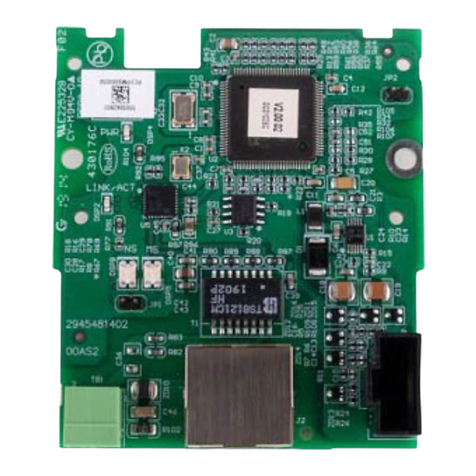
Delta
Delta CMM-EIP02 Instructions for use
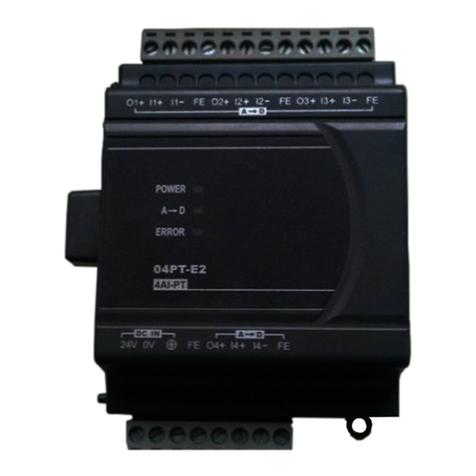
Delta
Delta DVP04PT-E2 User manual
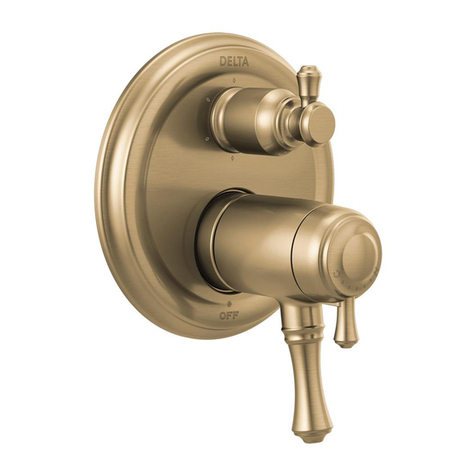
Delta
Delta T27T859 User manual

Delta
Delta AC-160-DIN User manual
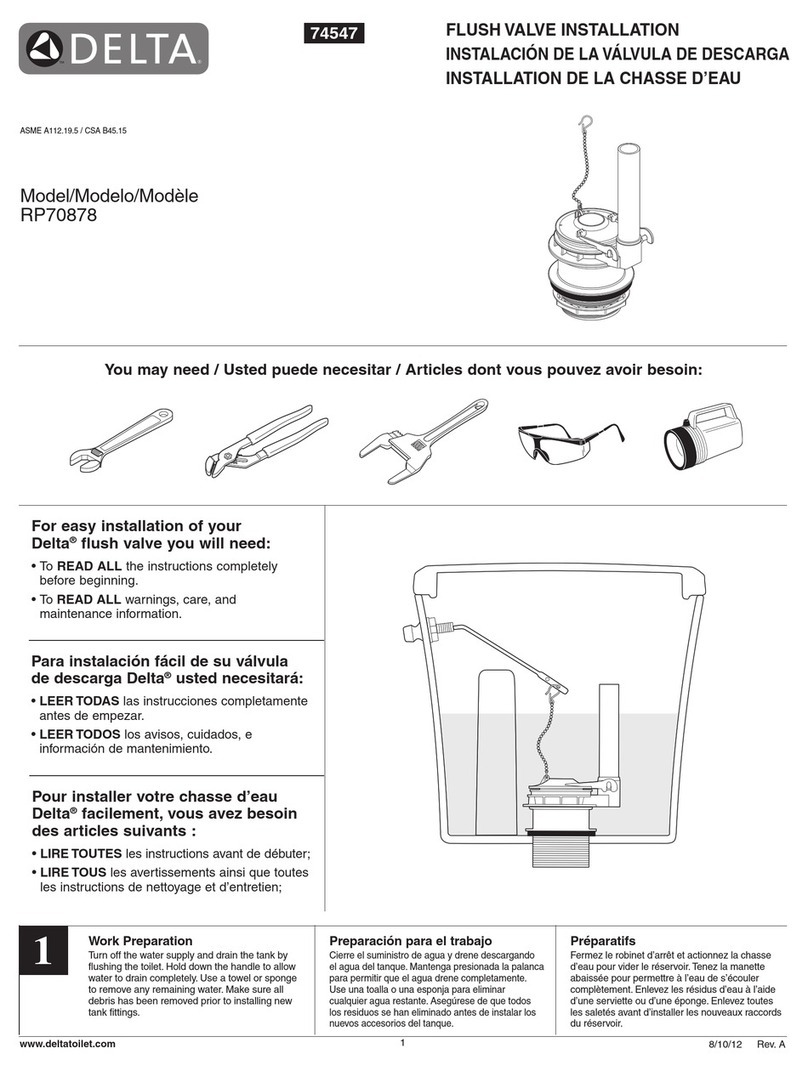
Delta
Delta RP70878 User manual
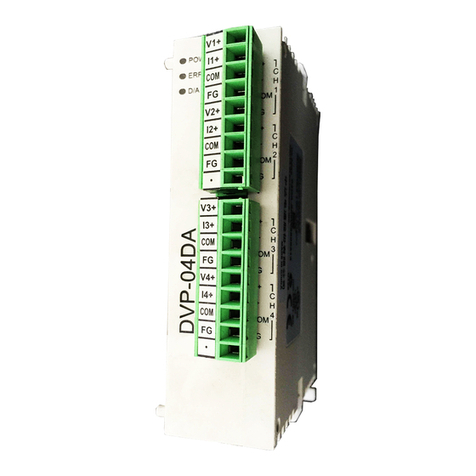
Delta
Delta DVP04AD-SL User manual

Delta
Delta DVP01PU-S User manual
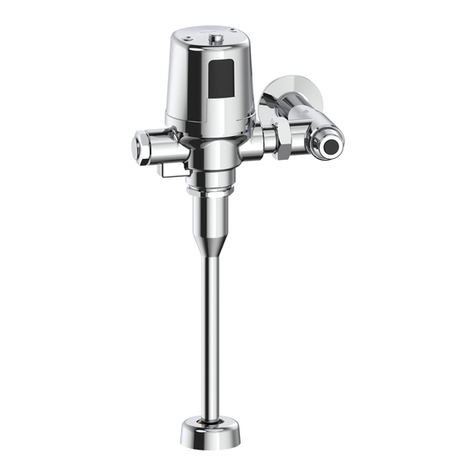
Delta
Delta TECK II User manual

Delta
Delta TECK II 81T201BT User manual
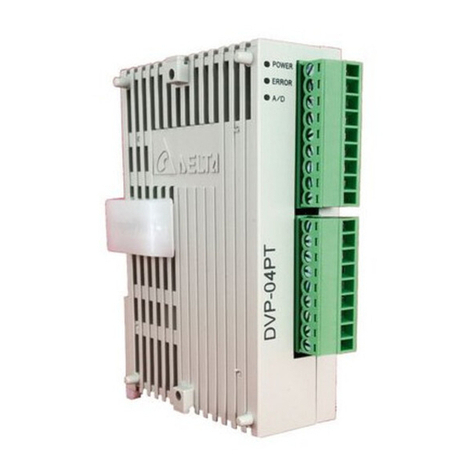
Delta
Delta DVP series User manual
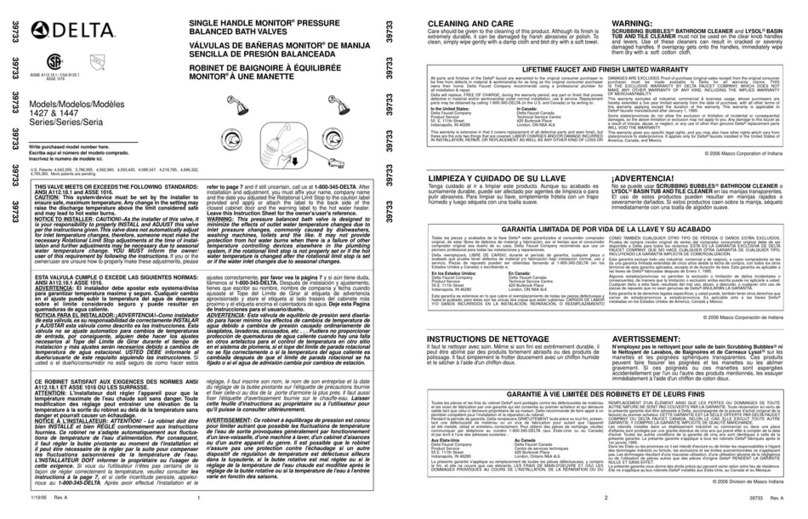
Delta
Delta 1427 User manual

Delta
Delta DIGI-LAN User manual

Delta
Delta JA-190X User manual

Delta
Delta DVPEN01-SL User manual
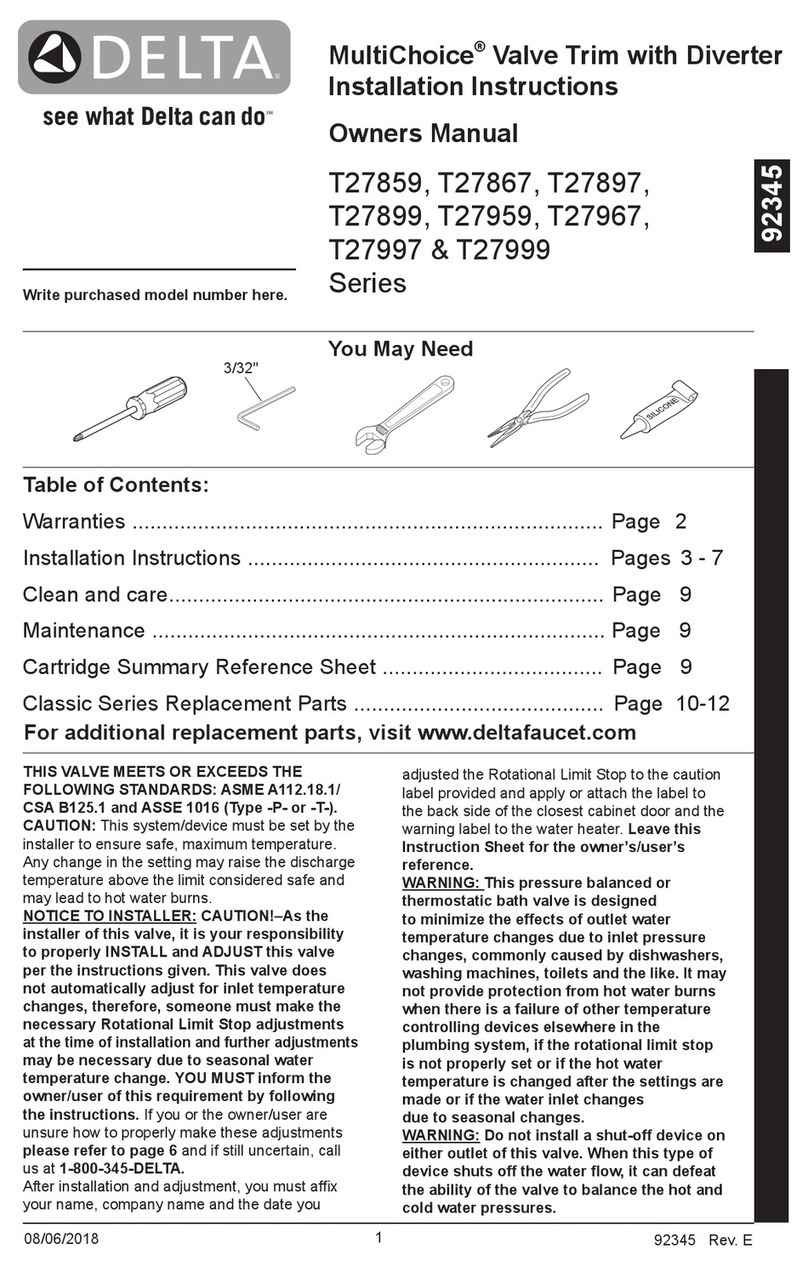
Delta
Delta MultiChoice T27897 Series User manual

Delta
Delta R3270-MIXLF User manual
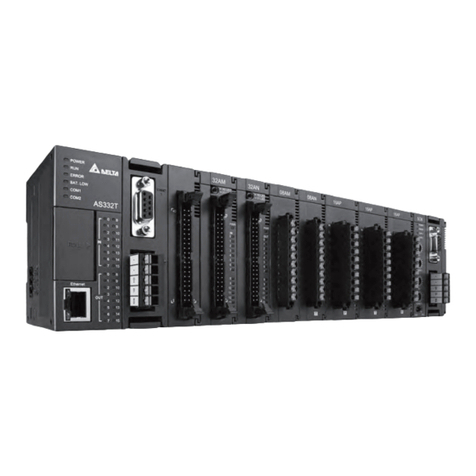
Delta
Delta AS Series User manual
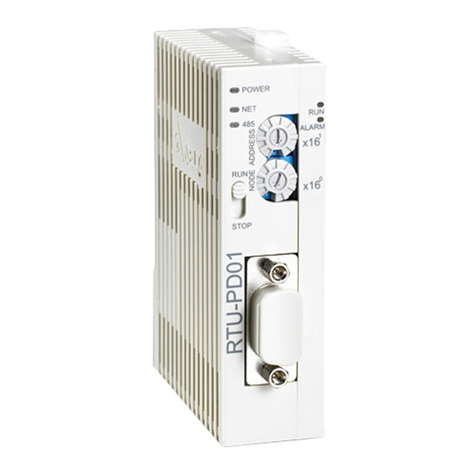
Delta
Delta RTU-PD01 User manual
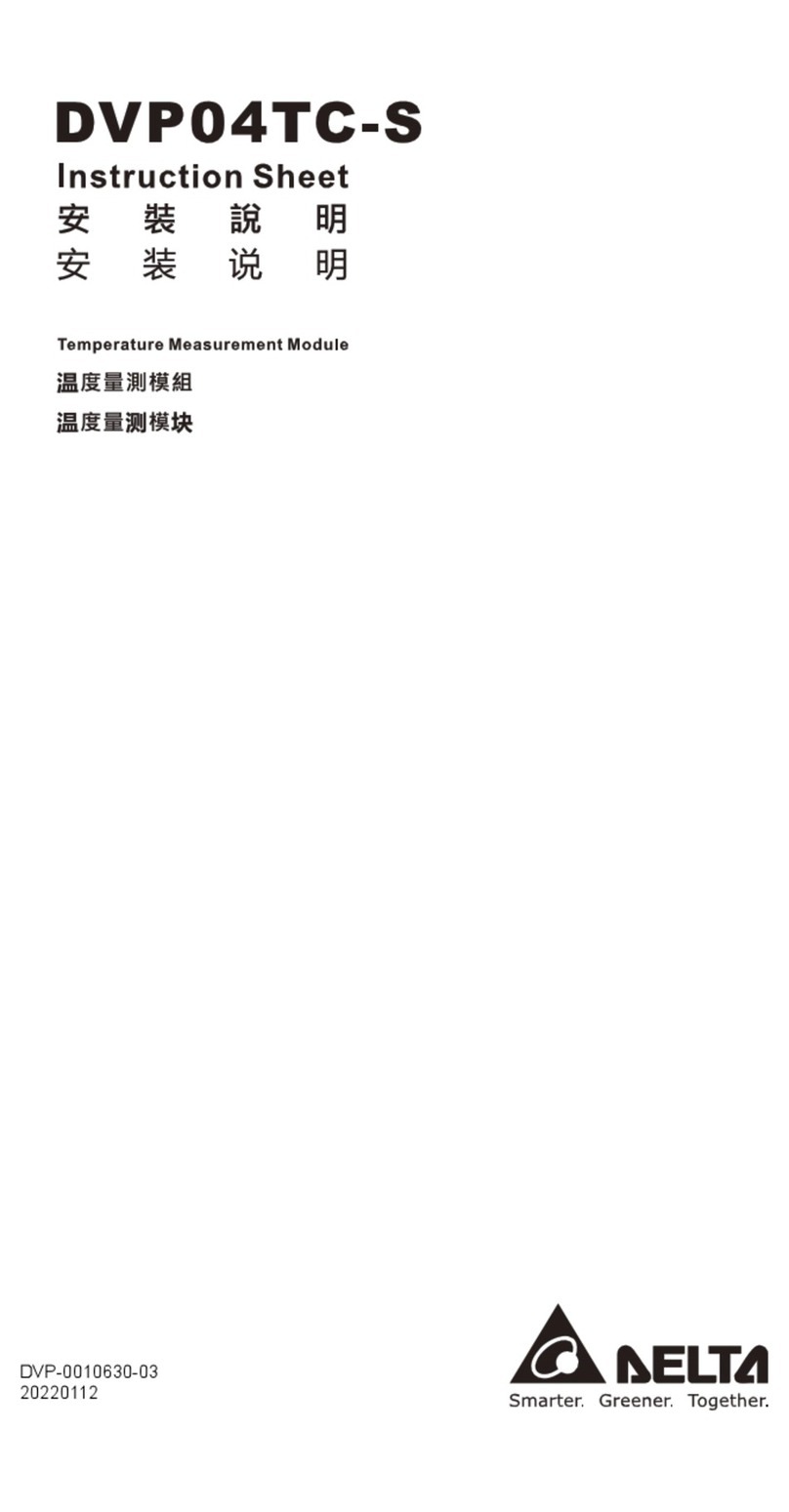
Delta
Delta DVP04TC-S User manual

Delta
Delta AH500 series User manual

